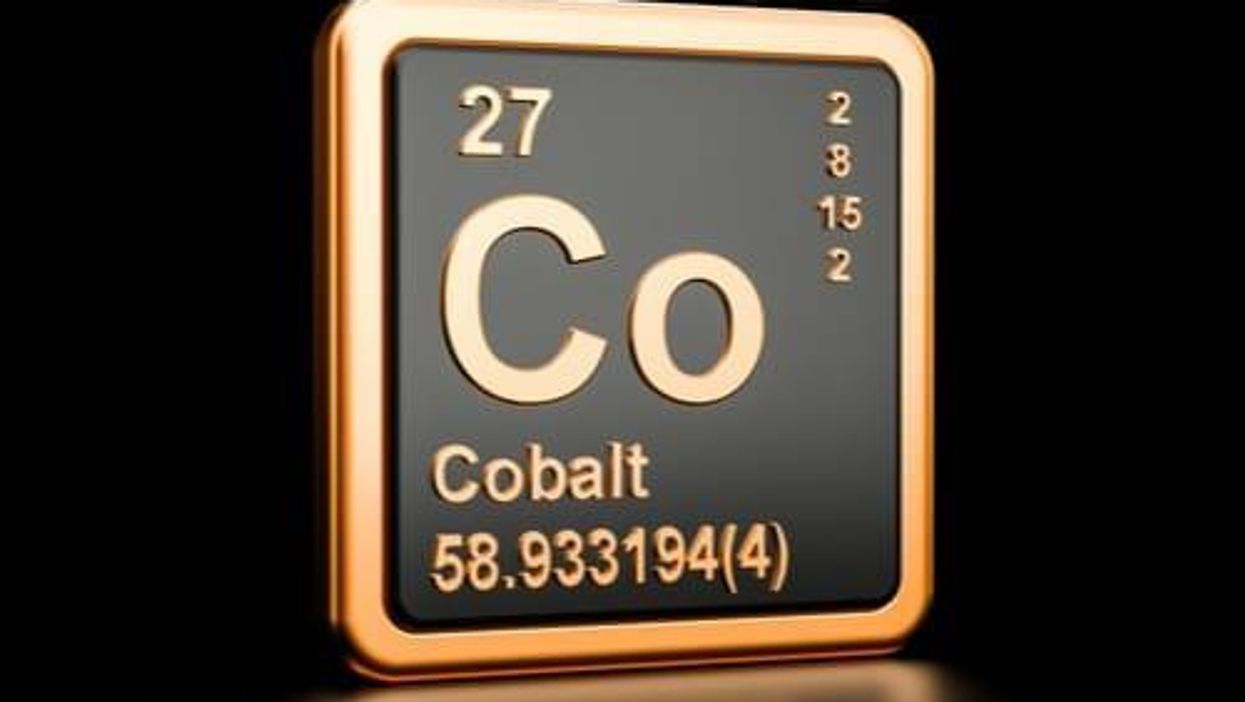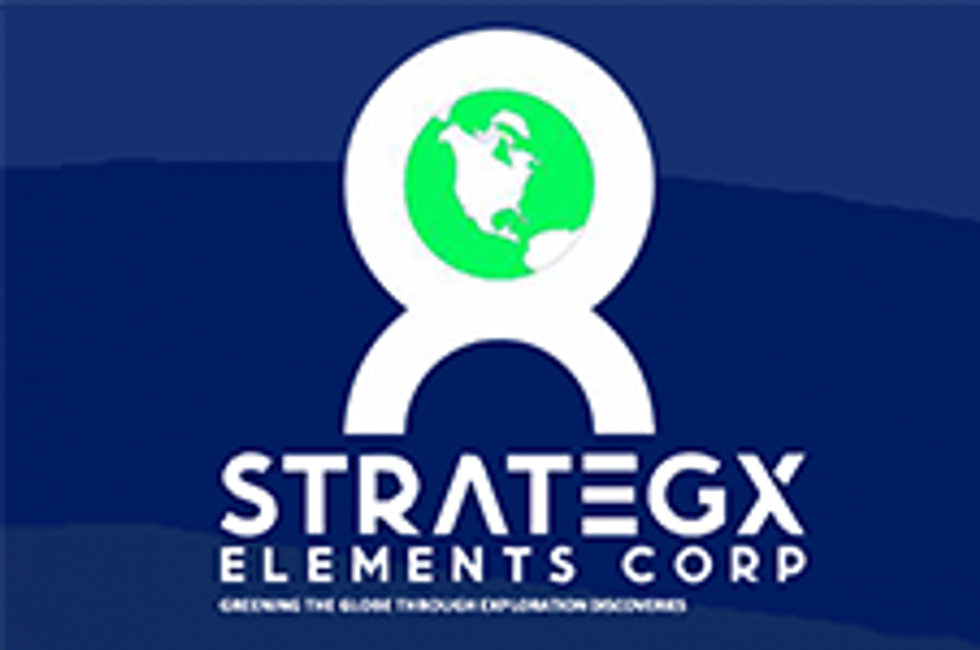- AustraliaNorth AmericaWorld
Investing News NetworkYour trusted source for investing success
- Lithium Outlook
- Oil and Gas Outlook
- Gold Outlook Report
- Uranium Outlook
- Rare Earths Outlook
- All Outlook Reports
- Top Generative AI Stocks
- Top EV Stocks
- Biggest AI Companies
- Biggest Blockchain Stocks
- Biggest Cryptocurrency-mining Stocks
- Biggest Cybersecurity Companies
- Biggest Robotics Companies
- Biggest Social Media Companies
- Biggest Technology ETFs
- Artificial Intellgience ETFs
- Robotics ETFs
- Canadian Cryptocurrency ETFs
- Artificial Intelligence Outlook
- EV Outlook
- Cleantech Outlook
- Crypto Outlook
- Tech Outlook
- All Market Outlook Reports
- Cannabis Weekly Round-Up
- Top Alzheimer's Treatment Stocks
- Top Biotech Stocks
- Top Plant-based Food Stocks
- Biggest Cannabis Stocks
- Biggest Pharma Stocks
- Longevity Stocks to Watch
- Psychedelics Stocks to Watch
- Top Cobalt Stocks
- Small Biotech ETFs to Watch
- Top Life Science ETFs
- Biggest Pharmaceutical ETFs
- Life Science Outlook
- Biotech Outlook
- Cannabis Outlook
- Pharma Outlook
- Psychedelics Outlook
- All Market Outlook Reports
What was the biggest cobalt news in 2019? Our most popular stories show that investors are keen to stay on top of supply/demand developments.
Declining prices were the main topic of discussion in the cobalt market in 2019, but interest in developments in the space still remained strong.
With carmakers promising to produce an increasing number of electric vehicles (EVs), many of the Investing News Network’s (INN) top cobalt news stories of the year focused on exactly how much of the metal these companies will need and where they will source it from.
Read on to see what cobalt news stories grabbed the attention of our investor audience in 2019.
1. Cobalt Demand to Rise 4 Times Despite Potential EV Battery Changes
As the energy storage revolution picks up pace, cobalt demand is set to rise four times by 2028, Benchmark Mineral Intelligence Managing Director Simon Moores told the US Senate back in February.
“We are in the midst of a global battery arms race in which the US is presently a bystander,” Moores said.
As a result, the scaling up of lithium, cobalt, nickel and manganese assets has become a major challenge for the industry.
“The growth trajectory expected for lithium-ion battery raw material demand is unprecedented,” said Moores, who previously testified to the US Senate in 2017.
2. Ford Sees Cobalt Production Under Pressure in the Near Future
In February, Ted Miller, head of energy storage strategy and research at Ford (NYSE:F), spoke at Mining Indaba about EVs, the future of cobalt supply and its use in lithium-ion batteries.
Miller said that even though current cobalt supply should keep pace with demand, the situation might get “tricky” over the next three to five years.
“I fully anticipate we’re going to keep a lot of pressure on that cobalt production,” he said. “Today it looks feasible but it’s a scenario we’re going to have to watch.”
3. Carmakers and the Cobalt Supply Conundrum — Part 1
For the resources industry, a shift towards EVs means there’s a rush on raw materials that are a little harder to come by, such as lithium, graphite, nickel and, of course, cobalt.
INN took a look at what carmakers around the world are doing to secure their place in producing the EV boom — and if they don’t seem to be doing much, what they are saying when it comes to cobalt.
You can also read part two of this series here.
4. Nickel and Cobalt are Going in Different Directions
At this year’s Lithium Supply & Markets Conference in Chile, INN caught up with Ken Hoffman, basic materials expert at McKinsey, to talk about the future for lithium-ion batteries and raw materials such as cobalt and nickel.
“One of the trends we’ve seen in the past year has been the collapse of lithium and cobalt prices,” he said. “However, we’ve seen phenomenal demand for the product.”
By 2030, McKinsey believes that between 18 and 27 percent of the vehicles sold globally will be electric.
5. BMW to Secure Cobalt Supply from Australia, Morocco
In April, carmaker BMW (OTC Pink:BYMOF,ETR:BMW) said it will buy cobalt directly from mines in Australia and Morocco, taking a major step to responsibly source its supply of the raw material.
The new supply of cobalt will be used in the carmaker’s next generation of EVs in 2020, Andreas Wendt, the BMW board member responsible for procurement, said at a briefing in Paris at the time.
“(These mines) operate in line with our sustainability standards, and there are no issues with working conditions such as child labor,” Wendt said.
Which cobalt news stories caught your attention this year? Let us know in the comments section.
Don’t forget to follow us @INN_Resource for real-time news updates!
Securities Disclosure: I, Priscila Barrera, hold no direct investment interest in any company mentioned in this article.
Editorial Disclosure: The Investing News Network does not guarantee the accuracy or thoroughness of the information reported in the interviews it conducts. The opinions expressed in these interviews do not reflect the opinions of the Investing News Network and do not constitute investment advice. All readers are encouraged to perform their own due diligence.
Outlook Reports
Featured Battery Metals Stocks
Browse Companies
MARKETS
COMMODITIES
| Commodities | |||
|---|---|---|---|
| Gold | 2329.78 | -0.87 | |
| Silver | 27.35 | -0.01 | |
| Copper | 4.56 | +0.02 | |
| Oil | 83.90 | +0.33 | |
| Heating Oil | 2.57 | +0.01 | |
| Natural Gas | 1.59 | -0.05 | |
Investing News Network websites or approved third-party tools use cookies. Please refer to the cookie policy for collected data, privacy and GDPR compliance. By continuing to browse the site, you agree to our use of cookies.



